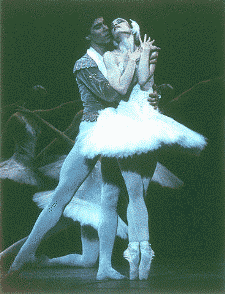The first ballet to enter the repertoire was Coppelia, and it entered in bits and pieces.
First a single scene, then act two was added on tour in 1951-52,
a two-act version in Western Canada in 1958-9,
and the third act was added at the end of 58-59 when the dancers could cope with it.

Swan Lake, which was the second major ballet to enter the repertoire premiered out of town in Peterborough in 1953, and the complete ballet was performed in Hamilton in January of 1959. The Pattern of development was preparation and rehearsal in Toronto, the premiere on the first stop of the tour, and finally a performance in Toronto after exposure across the country and the U.S. The difficulty was largely the lack of professionally equipped theatres in the city and also around the country, limiting their performance opportunity and their exposure.
Balanchine first entered the repertoire in the 1970's. In the beginning, Balanchine gave his works to the company for free, in exchange for Canadian Exposure, but when he found himself in need of money, he began charging for his works. The company was given a $1000 grant to pay Balanchine for Seranade, and the ballet represented a departure from the British tone of the company.

With all the comany's growth, the dancers still lacked a challenging dramatic repertoire, which led Franca to bid on Romeo and Juliet, which had premiered in Stuttgart where Cranko was resident choreographer.
The ballet was a popular success, and was performed at their O'Keefe Centre debut. Interestingly enough, the ballet was acquired by verbal agreement with Cranko, and Stuttgart disputed the right of the NBC to carry the performances. Eventually they were allowed to continue performances on their Japanese tour, but it was demanded that they drop it from the repertoire after taht. They never dropped it, but the costumes were destroyed by fire in 1973, and as a result was shelved. After Cranko's death, a proper agreement was reached, and Juliet became a signature piece for Veronica Tennant, who danced it until her retirement in 1989.

Ballet terms
Ballet Photo Gallery
Musings
First Page